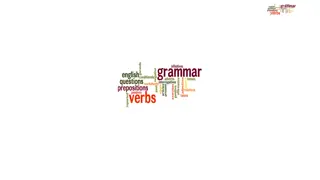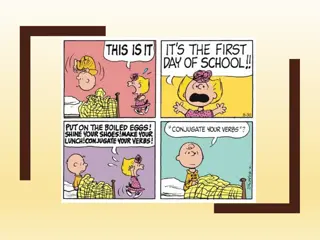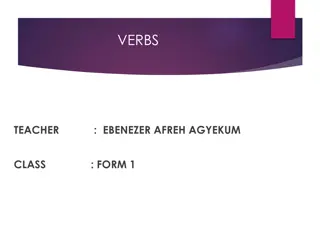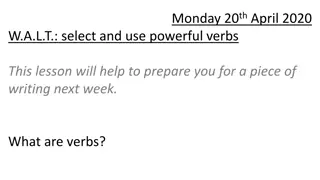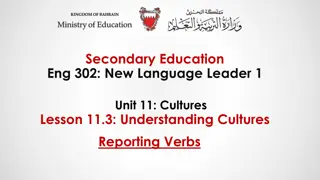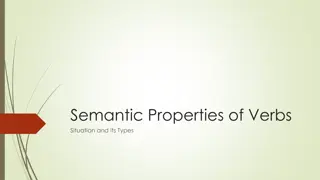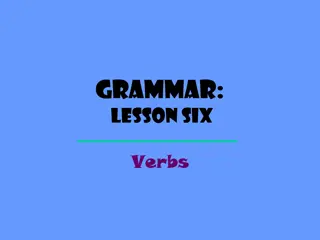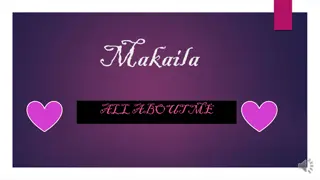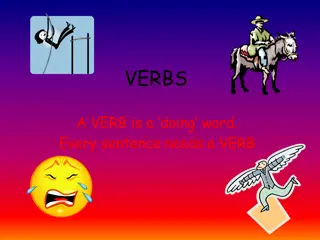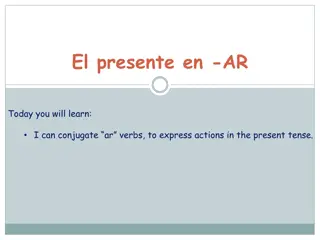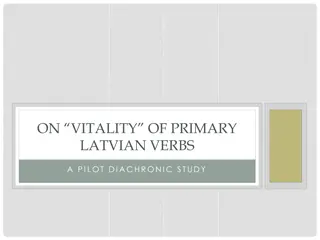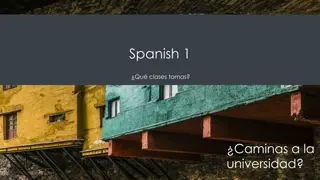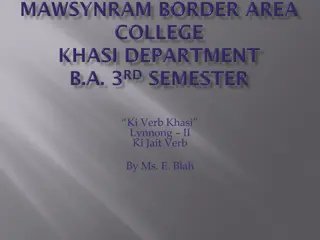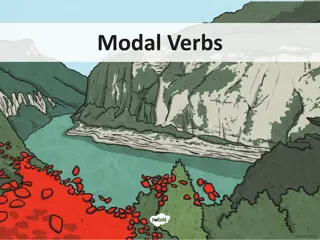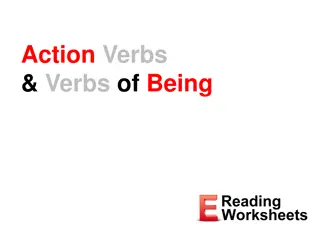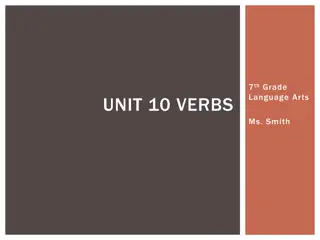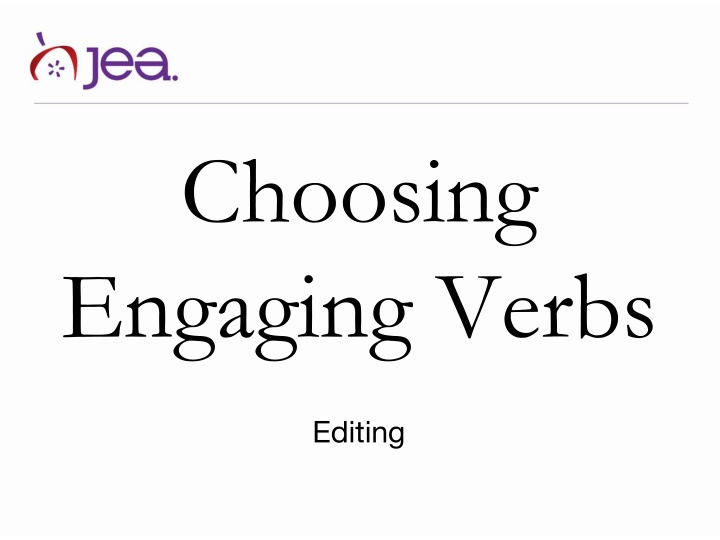
Elevating Your Writing with Engaging Verbs and Descriptive Language
Enhance your journalistic writing by choosing engaging verbs and painting vivid descriptions without inserting personal opinions. Explore examples of how specific verbs can transform mundane sentences into captivating narratives. Learn how to captivate readers with compelling language and detailed storytelling techniques.
Download Presentation

Please find below an Image/Link to download the presentation.
The content on the website is provided AS IS for your information and personal use only. It may not be sold, licensed, or shared on other websites without obtaining consent from the author. If you encounter any issues during the download, it is possible that the publisher has removed the file from their server.
You are allowed to download the files provided on this website for personal or commercial use, subject to the condition that they are used lawfully. All files are the property of their respective owners.
The content on the website is provided AS IS for your information and personal use only. It may not be sold, licensed, or shared on other websites without obtaining consent from the author.
E N D
Presentation Transcript
Choosing Engaging Verbs Editing
Journalistic writing doesnt have to be boring. True, slanted words aren t good to use. Neither are ones that show opinion or too much emotion. But that doesn t mean sticking with is, are, was, were and other dull words.
Make verbs specific One thing that can help is to choose specific verbs, though ones without opinion. Did the runner dash to the finish line? Or did he stumble or sprint or hobble? If you watched carefully, you could describe his movements without showing your opinion.
Lets look at some samples: The earthquake was not particularly strong. Then it ticked past the sixty-second mark, making it longer than the others that week. The earth snapped and popped and rippled. His watch swept past the three-minute mark and kept going. The Really Big One, 2106 Pulitzer Prize-winner for Features Kathryn Schulz of The New Yorker (describing seismologist Chris Goldfinger s reactions at the start of the 2011 earthquake in Japan)
The door swung open into a dining area. Siatta strode into the unfamiliar space. A little more than six feet tall and weighing about 175 pounds, he was a thoroughly trained veteran of a small-unit ground war and heavily tattooed, with red tally marks on his sternum indicating seven Taliban kills from 2009 and 2010. The women cowered behind a flimsy bedroom door. One of them dialed 911. Another clutched a stubby kitchen knife. The Fighter, 2017 Pulitzer Prize-winner for Features, C.J. Chivers of The New York Times (describing a former Marine s PTSD violence)
Doomed partygoers trapped on the second floor of a crudely converted warehouse screamed, Help us! Help us! as one of the deadliest structure fires in Oakland s history ripped through a tinderbox of makeshift living spaces and a labyrinth cluttered with art late Friday night, killing at least 24 people. officials conceded Saturday they had been unable to gain access during an inspection visit and it appears they did not follow up. 2017 Pulitzer Prize-winner for Breaking News, the staff of the East Bay Times A series of coverage stories about the Oakland Ghost Ship fire
Lets look at some examples: More members of the National Honor Society are going to see Hamlet Tuesday than did last year. National Honor Society members signed up in greater numbers to see Hamlet this year. There are fewer students in the band this fall. Fewer students joined the band this fall.

